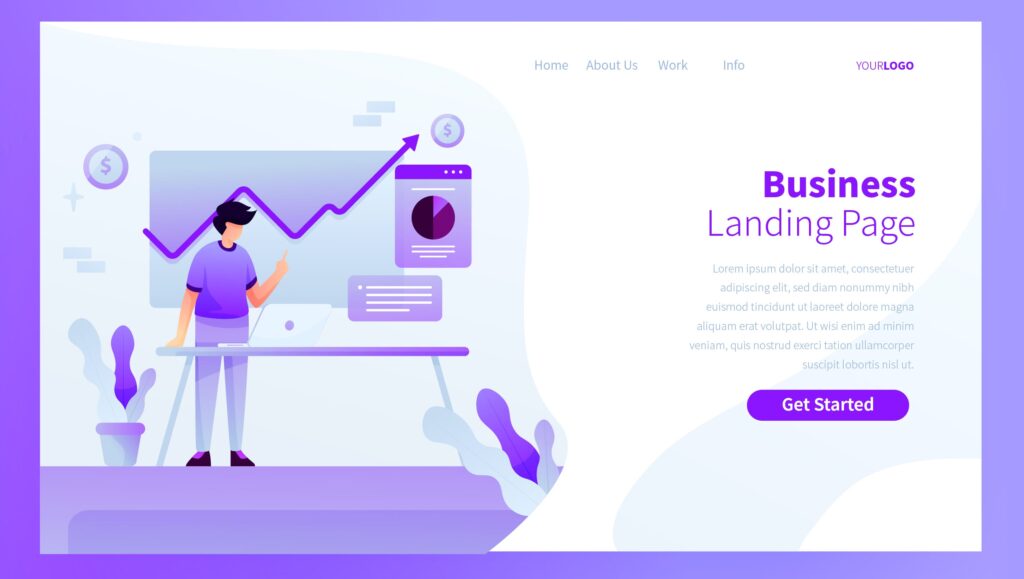Landing Pages Report is the answer for what report indicates the pages of a website where users first arrived. Google Landing Pages is a very useful and crucial report for collecting the key metrics about any website.
It also aids in analyzing how each customer reacts to the landing pages.
Keep reading till the end to find out more information on Landing pages and other related metrics!
About Landing Pages Report
The Google Analytics Landing Page report tells the owner of a site which of the pages the visitors get to see first after they land on a site. It also indicates whether or not those visits then turn into conversions and clicks.
Now you know which is the correct answer for what report indicates the pages of a website where users first arrived.
Let’s see why this report can be a little tricky to find in Google Analytics.
Google Analytics Way Of Defining Landing Pages
According to Google Analytics, a landing page refers to the first web page that the users get to see after entering a site.
As compared to the other definitions of a landing page, Google Analytics’ definition of it is a bit different. It refers to the first page – be it of any session and not limited to the purpose of the page.
This automatically refers to the fact that such pages could include blog posts, product pages, sign-up pages, help pages, or something else entirely.
Benefits Of Using A Landing Pages Report
The best place to start would be to analyze a landing page if you want to gain a perspective on how visitors make use of your website. Here is a list of benefits that using landing pages report poses for people:
Gain A Perspective On Pages That Introduce People
After you get to know which websites are introducing people to your site you will be able to optimize those pages accordingly.
For instance, if you get to know that the customers of your site are signing up for a free trial after clicking on a CTA on one of your blog posts, then you can try and replicate the success by creating something similar like that.
There are a few features on Google Analytics like the session recordings and heatmaps which help in measuring the exact behavior of the visitors who are interacting with the site.
They would be able to track the exact elements that help pull in visitors to a site.
1. Look At How The Visitors Are Getting To Know About Your Content
Just arriving on the landing page does not always refer to the start of a customer’s journey. There are several usages of different segments for gaining an understanding of the visitors that come to a site.
It helps in understanding how the visitors get to know about your site in the first place.
This information can be used for targeted forms of advertisement strategies and also for SEO (Search Engine Optimization).
Tip: If you have missed out on my answer on what report indicates the pages of a website where users first arrived, then you can go back and give it a read.
2. Measure The Performance Of Landing Pages
You can make use of the landing pages to find out which of the landing pages do successfully engage and encourage the users to stick around – and eventually, convert. It also gives insight into the pages that need even more work.
Users can also make use of conversion goals and filters which would aid them in getting clear about how they want to gain success for their business site.
For instance, a user would be able to make use of the Google Analytics features and optimize the pages to appear better on mobile devices or even track the bounce rate.
Landing Page Metrics To Look After
Here is a list of the landing page metrics which are very important to keep track of – if you want to boost conversions, sales, and traffic to your site:
1. PageViews
This is one of the first metrics to track right after “conversion”. It is important to track how many times have the landing page been viewed in total. This is one of the foundational metrics that help in marketing.
2. Bounce Rate
Bounce rate refers to the percentage of visitors who visit a site and then after viewing a landing page leave without initiating any other action.
The average bounce rate on the landing pages ranges somewhere between sixty to ninety percent.
If your primary aim is increasing the conversions then that would mean that you have to also decrease the bounce rate as much as you possibly can.
3. Average Spent Time On Page
A thorough monitoring of the time duration for which a visitor stays on your website is also a very strong indicator. It refers a lot to the success of a landing page.
If people spend a lot of time on your page then that would auto – indicate that the information that you have provided is very useful and informative.
4. Source Of Traffic
It is also very important to know where the visitors come from. These metrics are going to indicate which of the marketing campaigns will be working effectively and the ones won’t be working for much longer.
To Wrap It Up!
That was all for information regarding “what report indicates the pages of a website where users first arrived”, and much more. Thank you for reading up till here. I hope you found the information useful.
Read Also
- What campaigns require manual tags on destination URLs for tracking?
- What Report Shows Which Web Pages Get The Most Traffic And Highest Engagement?




